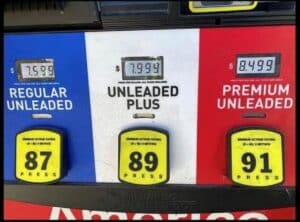
As a young man I had trouble comprehending William Jennings Bryan’s “cross of gold” speech at the 1896 Democrat National Convention in Chicago; a speech which got the 36 year old former congressman the Democrat Party’s presidential nomination… albeit on the fifth ballot. We are told Bryan spoke eloquently about the coinage of silver before losing the election to Republican Grover Cleveland, who advocated a gold standard.

William Jennings Bryan (1860 — 1925)
My confusion arose because the US Constitution says, in part, “no state shall make anything except gold and silver coin a tender in payment of debt..” Since the Coinage Act of 1792, congress had authorized the use of both gold and silver coins and each variety had been struck in the millions. What was the difference between the two parties in the 1896 election? How was minting gold coins, which had been done for 104 years by that time, crucifying anyone on a cross of gold?
As the great Paul Harvey used to say, here’s the rest of the story, or at least part of it. I will be writing about money for the next several issues of THE STANDARD. America’s first coinage act in 1792 adopted a decimal system rather than the pounds, shillings, pence and all the rest of the confusing English system that had existed during colonial times.

A Spanish dollar with “pieces of eight” along with a quarter dollar (2 bits) and a half dollar (4 bits).
The act made something called a “dollar” our unit of currency. In making that decision, congress was influenced strongly by the success of the “Spanish milled dollar” then in common circulation in the colonies. The Spanish dollars were more famous as the Pirate’s “pieces of eight.” This was due to the common practice of breaking those coins into as many as eight pieces because there were no smaller denominations being made for circulation.
That’s the origin of the American slang expression “two bits” for a quarter and “four bits” for a half dollar, though those expressions are heard more rarely today.
In that first coinage act of 1792 we find the answer to the mysterious “cross of gold” William Jennings Bryan complained of so bitterly. Congress stated our unit of money would be known as a dollar, then had to define what a dollar actually was. The dollar is a unit of weight of the precious metals gold and silver. The Act provided for gold coins with the values of ten dollars, five dollars, and two and a half dollars were to be struck from gold. Coins with the value of one dollar, half a dollar, a quarter of a dollar, one tenth of a dollar, and one twentieth of a dollar were to be struck from silver. Finally coins of one penny and a half penny were struck from copper.
The dollar is a unit of weight of the precious metals gold and silver.
Notwithstanding the copper coins, this was known as a bimetallic standard, with coins of higher value being made from gold, and coins of one dollar or less of silver. Since the weight of the coins was defined by law, it was necessary for the newly established U.S. Mints to determine the relative values of gold and silver. The coinage act determined that ratio to be fifteen units of silver would be equivalent to one unit of gold. This ratio of 15:1 was the key to understanding William Jennings Bryan’s Cross of Gold.
When the coinage act was adopted in 1792, the fair price of gold was indeed 15 times that of an equal weight of silver. Over the next 104 years some very remarkable discoveries of silver by Henry Comstock and others would greatly increase the amount of silver in these United States. By 1896 a ratio of 16:1 was probably closer to reality. That means it would now take 16 ounces of silver to equal the value of just one ounce of gold.
Since the law fixed the weight of silver in a silver dollar, the weight remained unchanged, no matter how much silver is discovered and produced in our western mines. That, in turn, means “dollars” of silver just did not have as much value as “dollars” of gold. Gresham’s law, attributed to Sir Edward Gresham (1519 – 1579) an early English economist, describes what happens when two coinages, each with the sale legal face value, circulate when one, the gold, was much more valuable than the silver coin with the same face value. Simply stated, Gresham’s Law states “Bad money drives good money out of circulation.”
The discovery of vast amounts of silver means silver was now less valuable, therefore it took more silver dollars to buy a gold dollar than it did in 1792. The result was the silver coins circulated and the gold coins were hoarded as people took them out of circulation.

1892-1964 US silver coins were 90% silver.
I remember in the late 1960’s once clad coinage replaced circulating silver coins in 1965, we would still find the occasional silver coin in our change. We quickly pulled the silver coin out to be saved because it was a lot more valuable that the clad coinage even though the law considered them to be the same. That was Gresham’s Law in action.
From the inception of our republic, it has been a common practice to write contracts to require payment of monetary amounts IN GOLD. Now you have the background to understand what William Jennings Bryan was asking for. The Democrat party wanted laws requiring all the silver they could dump on the U.S. Mint to be minted into coins, those coins released into circulation and the law to still require those silver dollars to be accepted as repayment for loans bankers had made in good faith IN GOLD, with contracts requiring repayment IN GOLD.
This would have allowed miners, farmers, and others in the west to borrow GOLD dollars and repay those debts with SILVER dollars, of less value. That meant such legal tender laws would have destroyed banks, while wreaking havoc on our economy. Pumping millions of silver dollars into circulation would indeed cause massive price inflation. If the law allowed, perhaps even required, you to lend me something of value, then accept something even less valuable as repayment, you were being defrauded.

1916 German Mark Coin
Now for the first time, I learned unlimited coinage of silver was the 1896 version of our running printing presses to create more paper notes today. This is a process known as quantitative easing.
It has often been used as a weapon of war, or in the case of Germany after WWI, as a way to avoid having to repay staggering war debts imposed by the Treaty of Versailles. In 1916 a German Mark was a small gold coin equal in value to ¼ of a U.S. Dollar. With German cities and its economy in ruins, there was no way Germany could pay for all the costs of rebuilding post war Europe.
Less than 100 Years Ago
The Weimar Republic found a unique way to meet the unfair treaty obligations. First they stopped converting paper notes into gold on demand. They passed laws stating paper Marks were just as valuable as gold Marks. Once both those laws were in place, Germany ran the printing presses night and day, churning out billions of face value notes which were not backed by any reserves and were not convertible into gold, or much of anything else of any value.

1923 Germany Weimar Republic, 50 million Mark note.
Beautiful engraved banknotes of the pre-war era were replaced with notes of lower quality, printed on cheaper paper and by October of 1923 right before the economic collapse that helped bring Hitler to power, they were even just printed on one side of the paper. We even have apocryphal stories of a man with a wheel barrow full of these banknotes leaving his wheel barrow of money on a sidewalk, while he entered a store to look at prices to see if he could afford any food. While he was in the store, someone dumped all his money on the sidewalk and left it when they stole his wheel barrow.

1923 Weimar Republic, 1 Billion Mark Banknote.
Prices were raised weekly, then daily and by October of 1923 prices were being raised two and three times in a day. Germans learned to spend their money in the morning on the way to work, because tonight after work, it’s purchasing power will have declined noticeably.
In the beginning of hyper inflation of a currency, the declines in purchasing power are expressed in terms of how much paper currency is required to buy things, usually gold. Somewhere around the hundred million to one level, paper money simply stops being used and business resorts to bartering or the use of some foreign currency that has not been debased in the same manner.

1923 Weimar Republic, 20 Billion Mark Banknote.
I have been preaching this for the past 56 years, since 1965. Liberals and even many, if not most, Republicans, have ignored my warnings about departing from the system created by the founding fathers. Now it is happening.
As I was driving to an appointment this morning, I saw Pilot Truck-stops on Interstate 85 are now selling 87 octane, regular unleaded gasoline for $3.17 a gallon! The same gallon of gasoline was selling for $1.75 a gallon, or less, on Inauguration Day this year. Therefore on January 20, 2021, you could have bought 57 gallons of gasoline for $100. Today you can buy only 31 and a half gallons!
Turn Up the Presses!
Will this trend or our paper dollars to lose purchasing power continue? Will our money lose another 26 gallons of purchasing power over the next nine months? To answer that question we need to look into the causes of the decline. Here are a few of the underlying causes:

California prices at the pump over $8.00/gallon.
Quantitative easing, which is running the printing presses; blocking domestic oil production; paying Americans not to work; sending out stimulus checks to everyone, pushing a massive $1.25 trillion spending bill that actually has little to do with infrastructure. These policies are likely to continue and watching the price of a gallon of regular gasoline will make an excellent economic marker.
The United States Constitution specified in Article I, Section 8, “congress shall have the power to coin Money, regulate the value thereof. . . “ Notice the word “coin” in that sentence is a verb, an action word. It describes the act of striking coins from metal. The founding fathers specifically decided not to use the word “print” which would have been describing paper as money. They used “coin” the process of striking coins from metal, because they voted our money was to be metal, not paper.
What sort of metal you may be asking? Article I, Section 10 contains the things the states will be prohibited from doing under the Constitution. States are prohibited from “coining Money.” Common sense tells us, if the states cannot coin Money, then they must use the money the federal government coins pursuant to Article I, Section 8 mentioned above.
We also see Article I, Section 10 continuing the list of things states may not do, includes a provision on Money. “No state shall make anything except gold and silver coin a tender in payment of debts.”
Again, common sense dictates, if the states must use the Money coined by the federal government; then the federal government must make coins from gold and silver.
The federal government is authorized to borrow Money to pay its debts. Clearly the Money the government is authorized to borrow is gold and silver coins. There was a proposal debated August 18th 1787 in the Constitutional convention to insert the three words “and emit bills” into that provision of Article I, Section 8 dealing with coining Money. The words “and emit bills” was soundly rejected and it was the intention from the start, our government would not “emit bills” that is to say, print paper substitutes for gold and silver coins.
No state shall make anything except gold and silver coin a tender in payment of debts.
Does all this seem complicated and technical to you? There is a way to greatly simplify the definition of Money adopted by our founders in the Constitution. Here is a version any three year old child can explain. Unwrap a piece of candy in front of the child and ask the child if it would rather have the piece of candy, or the empty candy wrapper? The child will take the candy, not the candy wrapper, every time.

St. Gaudens $20 dollar gold coin
Now, take a St. Gaudens Twenty Dollar gold piece, wrap a current twenty dollar bill around the gold piece. Now, just as with the child and the candy, slowly unwrap the twenty dollar bill from around the twenty dollar gold piece. Hold the gold piece in one hand and the empty twenty dollar federal reserve note in the other hand. Which would you rather have?
Which one will retain its purchasing power when quantitative easing (running the printing presses) has doubled the number of paper notes in circulation? Obviously the gold coin is totally unaffected, while the purchasing power of the paper note will have been cut in half.
This is not taught in schools any more. That is because the folks on the political left want the general population to be ignorant of monetary policies, so they can continue to fund big government with the inflation tax.
Politicians understand, if they allow the people to have paper substitutes for money (all the paper notes currently in circulation) and then pass income tax laws requiring the people to give half of them back as taxes, the people squawk and sulk over high taxes. However, if they can simply pay for new government spending (the purpose of taxes) by printing new notes, they accomplish the exact same thing, with a lot less squawking and sulking.
As the number of notes in circulation doubles, the purchasing power of each note is halved. That means the politicians can take away half the purchasing power of the notes in your wallet without ever writing another tax law or sending you a bill!
The requirement for Money to be gold and silver coins was precisely to prevent such a circumstance. Liberals will say what difference does it make? The answer is simple. Under the system provided for in the Constitution, the gold and silver is all in the hands of the people and is circulating in commerce. This is the heart of free enterprise and was the engine that drove American Exceptionalism in the first two hundred years of our republic.
Under the current system, the government has almost all the gold and silver, the people have pieces of paper whose value shrinks over time, and the government prints more and more of them. The last year silver coins circulated was 1964. The price of a gallon of gasoline was under twenty five cents. You can still buy four gallons of gasoline today with one silver dollar.
The price, in silver, remains almost unchanged since 1964. This is true no matter what OPEC does or how much we produce. The price denominated in paper notes is now over $3 per gallon here in South Carolina. That is twelve times what the price was in 1964 as expressed in silver coin.

Please share freely and donate to The Standard on this page to assure the continued availability of news that is ignored too often by the dominant media.
Please “like”, comment, share with a friend, and donate to support The Standard on this page. Become a Patron!
Click the QR Code below to donate any amount.




 RSS - Posts
RSS - Posts